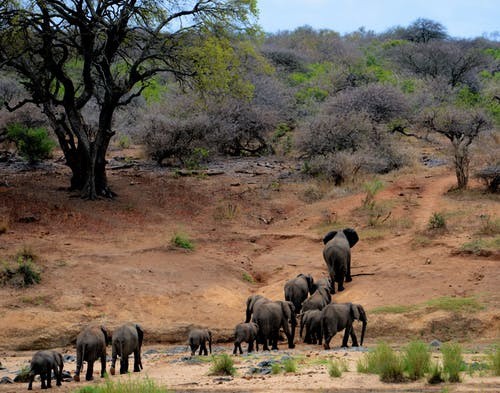
Contrary to popular belief, seasonal rains are not the most important factor for starting the growth cycle of plants across Africa.
New research shows that the amount of daylight plants receive is the biggest contributing factor to starting the iconic 'green-up' phenomenon in Africa - where the continent's plants and trees grow their leaves.
A team of researchers from Lancaster University, the University of Southampton, and the University of Seville, examined satellite sensor images of the continent and analyzed the relationship between vegetation growth and climatic factors. They found out that the length of daylight is the most important factor for the start of growth in vegetation. This was the case from the extreme north of Africa, across the Sahel, and also in the southern African savannah.
Although a combination of climatic factors is an important key, the study found out that days with shorter hours of sunlight before the start of germination season resulted in a much later onset of vegetation growth.
The research showed that pre-season rainfall had no significant effect on the start of vegetation growth - with the exception of grasslands. This finding is backed up by other evidence that shows plants and trees across Africa were greening ahead of rainfall.
However, multiple factors were also found to influence the onset of dormancy at the end of the growth season. In addition to the length of daylight, factors such as temperature also caused postponement of the onset of growth, even triggering dormancym for some plants and trees.
These findings are important in the understanding of plants across Africa as the World adapts to climate change. Around 38% of the global climate carbon-cycle feedback comes from Africa - therefore it is important to understand the continent's vegetation responses to develop accurate atmospheric models.
Professor Peter Atkinson, Dean of Lancaster University's Faculty of Science and Technology and Senior Researcher on the project, said: "The triggers of vegetation growth in Africa are poorly understood. This study provides evidence that, contrary to widely held expectations, rainfall is not a direct driver of vegetation onset and dormancy in Africa and that the amount of daylight available, is a more important factor."
"These findings are important as they help us to understand how vegetation will respond in a world where climate change could lead to variation in factors such as rainfall and temperature."
This research also highlighted the importance of daylight in vegetation phenology and the seasonal growth cycle of plants. It is also a key factor that should be included into all models that depend on vegetation phenology and productivity.
Jadunandan Dash, Professor of Remote Sensing at the University of Southampton, said: "These findings add to our understanding of vegetation seasonality across Africa, although day length is a primary driver, it is clear that vegetation phenology is influence by the combination of two or more factors rather than a single factor. These results coupled with the development of new satellite remote sensing capabilities would help to develop and characterise better model to represent the complex vegetation-climate interaction across Africa and therefore reduce uncertainty in quantifying carbon exchanges."
© 2025 NatureWorldNews.com All rights reserved. Do not reproduce without permission.





